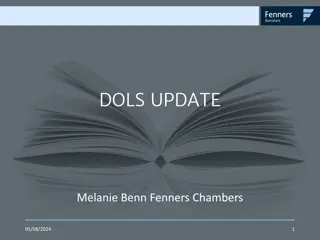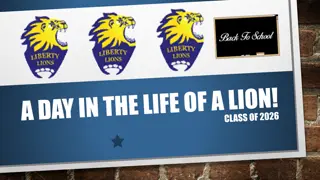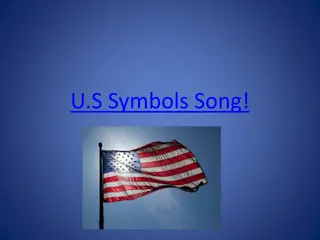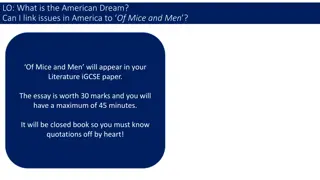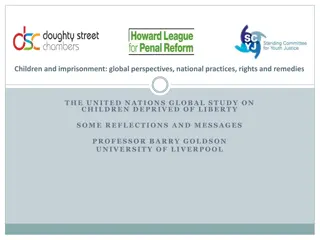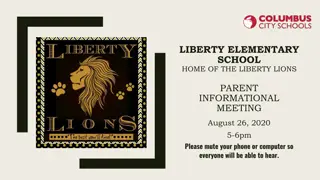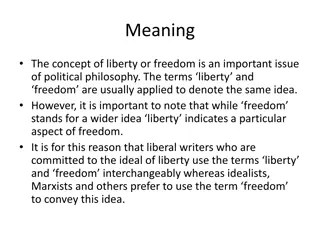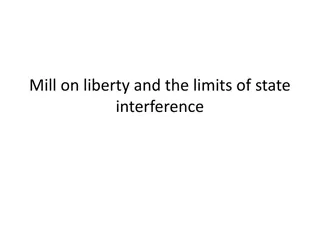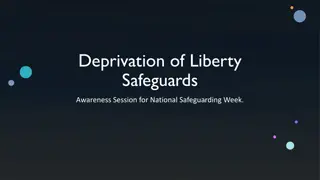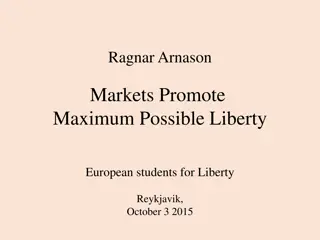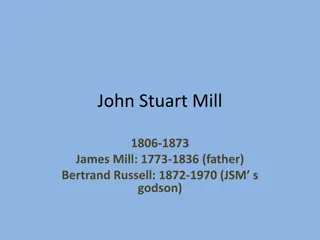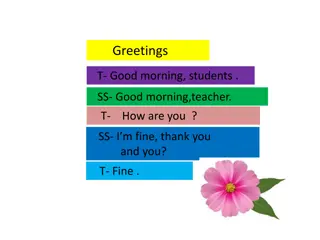Exploring the Statue of Liberty: Lesson for Class 10 Students
In this lesson, students of class 10 learn about the Statue of Liberty, its significance, and the historical context behind this iconic symbol of freedom. Through discussions, listening exercises, and answering questions, students engage with the learning outcomes related to specific information, reading comprehension, and critical thinking skills.
Uploaded on Sep 27, 2024 | 0 Views
Download Presentation

Please find below an Image/Link to download the presentation.
The content on the website is provided AS IS for your information and personal use only. It may not be sold, licensed, or shared on other websites without obtaining consent from the author. Download presentation by click this link. If you encounter any issues during the download, it is possible that the publisher has removed the file from their server.
E N D
Presentation Transcript
Welcome, My dear students of class 10
Teachers identification Md. Ayub Ali Asst. Snr. Teacher Gouripur S. A. High School Gouripur, Cumilla. 01817-590415
Q. Do you know what it is? Ans. Yes ,sir . we know. It is the National Memorial situated at Savar.
Look at the picture. Can you say what it is? Yis sir. It is the statue of liberty.
So, our todays lesson is U: 8, L: 3 The Statue of liberty Learning outcome: After you have studied the lesson, you will learn to listen for specific information, read and understand the text through silent reading, ask and answer the questions.
A. Look at the picture and talk about it in pairs. 1. Do you know what it is? Ans. Yes, sir. I know. It is a statue. 2.Discuss what stands out in the picture. Ans. I see it is holding a torch in its right hand, wearing a spiked crown and holding a book in the left hand. 3. Do you think that it is a man or woman? Ans. Yes, I think. It is a woman.
B. Read the questions first. Now listen to your teacher about the Statue of Liberty and answer the following questions. Q. Where is the Statue of Liberty situated? 2. Which country gave the statue as a gift? 3. The gift was meant for which country? 4. On what occasion was it given? 5.When was the statue given? 6. What does the statue represent? Listening text: The Statue of Liberty is a colossal sculpture on liberty. It is situated in the harbour of New York. France gave the United States of America the statue as a sign of friendship. It was presented to commemorate the centennial of freedom of the USA . The statue is a female figure wearing a robe. She represents that she would move forward freely, enlighten the world with her torch and be free from oppression and slavery. Thousands of people saw the unveiling ceremony of the Statue of Liberty on October, 1886. It was a centennial gift and was given in 1886. The statue represents her free forward movement, enlightening the world with her torch and free from oppression and slavery.
Answers 1. Where is the statue of liberty situated? Ans. The Statue of liberty is situated in the harbour of Newyork. 2. Which country gave the statue as a gift ? Ans. France gave the statue as a gift. 3. The gift was meant for which country? Ans. The gift was meant for the USA. 4. On what occasion was it given? Ans. It was given to commemorate the centennial of USA Independence in 1886. 5. When was the statue given? Ans. It was given in 1886. 6. What does the statue represent? Ans. The statue represents her free forward movement, enlightening the world with her torch and free from oppression and slavery.
C. Listen to the text again and complete the chart. Statue of liberty Information 1. situated 2. artist 3. gift from 4 reason for gift 5. presented on 6 occasion 7. the statue symbolizes 8. framework made of 9 . Amount of copper used 10. weight 11. year of UNESCO World Heritage Site
Answer Statue of liberty information 1. Situated 2. Artist 3. Gift from 4. Reason for the gift 1. On the harbour of New York. 2. Fredric Auguste Bartholdi. 3. France. 4. To commemorate the centennial of US Independence in 1876. 5. Liberty of USA. 6. The centennial of USA Independence. 7. Free from oppression and slavery. 8. Copper sheets 24 k gold leaf,iron. 9. 27.22 metric tonnes. 10. 204.1 metric tonnes. 11. In 1984. 5. Presented on 6. Occasion 7. The statue symbolizes 8. Framework made of 9. Amount of copper used 10. Weight 11. Year of UNESCO World Heritage Site
D. Read the text and answer the following questions. The French Sculptor Fredric August Bartholdi was assigned to design and complete a sculpture within 1876, so that it could be a gift for the Americans on the occasion of celebrating the hundred years of the American declaration of independence. The statue was a joint venture between the USA and France. The French people would build the statue and assemble it in the states, and the people of the USA were to build the pedestal for the statue. Raising money for the pedestal was completed in August 1885. The construction of the pedestal was finished in April 1886. In the mean time, France completed the statue in July 1884. They sent it to New York on board the French war ship Isere in 1885. While transporting statue, it was slip up into 350 individual pieces and packed in 214 crates. It took four months to put the statue together and placed it on the pedestal. Thousands of people saw the unveiling ceremony of the statue of liberty on Oct. 28th 1886. It was a centennial gift ten years late. The freedom that the statue stands for is not stationary. The broken chain wrapped around her feet, sticking out from the bottom of her robe, symbolizes her free forward movement, enlightening the world with her torch, free from oppression and slavery.
The statues original torch was the first part constructed in 1876. It was replaced by a new copper torch covered in 24 k gold leaf in1984. The torch is lighted by flood light at night. The original torch is currently located in the lobby of the monument. Access to the torch has been closed since 1916. From October 28, 2011 , on her 125th anniversary, the statue of liberty was named Liberty enlightening the world wide web . The credit goes to a series of new web cams placed around her torch. Several amazing views will be just a click of a mouse away. On clear days, three cameras provide unobstructed scenes and views. Two cameras provide an ultra wide-angle interactive view of the famous golden torch. The remaining camera looks downwards towards the crown of the Statue of Liberty, her face, the tablet she is holding from your computer or smart phone. So a person can have access to the web cam s live feed of the Statue of Liberty from anywhere in the world.
Questions 1. On what occasion did the French government give the Statue of Liberty to the USA? Ans. They gave it on the occasion of celebrating the hundred years of the American Declaration of Independence. 2.When did she reach her destination? Ans. She reached her destination in 1886. 3. How was she transported? Ans. She was transported on board by French war ship Isere . 4. How has new technology made it possible for people to see the statue from anywhere they are? Ans. People can see it through the new technology of web camera. 5. What do you understand by the expression enlightening the world ? Ans. I think that in recent time the new technology of web camera is being used so that people can view it from any corner of the world. Thus, with this technology, the statue has enlightened itself for the people all over the world.
Home task Fill in each gap with a suitable word of your own based on the information from the text in A . The Statue of Liberty is a (a) .of friendship between the French people and the Americans. The France Govt. (b). ..to give it to the USA (c) . a gift at America s centennial (d) . of independence. But it was (e) ten years later of its centennial ceremony of independence. The Statue was (f) by a French sculptor (g) ..Fredric Bartholdi. He was (h) .to complete the statue in 1876 by the France Govt. After (i) . of the statue, it was sent to the New York by the (j) war ship Isere in 1885. Answer a. token/symbol b. wanted c. as d. ceremony e. unveiled f. designed g. named/called h. assigned i. completion j. French.



